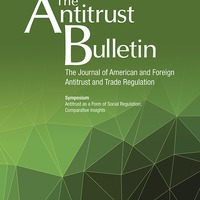Monopsony Power and Guest Worker Programs
Item
Title
Monopsony Power and Guest Worker Programs
List of Authors
Eric M. Gibbons; Allie Greenman; Peter Norlander; Todd Sørensen
Abstract
Guest workers on visas in the United States may be unable to quit bad employers due to barriers to mobility and a lack of labor market competition. Using H-1B, H-2A, and H-2B program data, we calculate the concentration of employers in geographically defined labor markets within occupations. We find that many guest workers face moderately or highly concentrated labor markets, based on federal merger scrutiny guidelines, and that concentration generally decreases wages. For example, moving from a market with a Herfindahl-Hirschman Index of zero to a market comprised of two employers lowers H-1B worker wages approximately 10%, and a pure monopsony (one employer) reduces wages by 13%. A simulation shows that wages under pure monopsony could be 47% lower, suggesting that employers do not use the full extent of their monopsony power. Enforcing wage regulations and decreasing barriers to mobility may better address issues of exploitation than antitrust scrutiny alone.
Date
2019
Publication Title
The Antitrust Bulletin
Publisher
Sage Journals
Identifier
DOI 10.1177/0003603X19875040
Bibliographic Citation
Gibbons, E., Greenman, A., Norlander, P., and Sorensen, T. (2019). Monopsony Power and Guest Worker Programs. Antitrust Bulletin, 64: 540-565.
